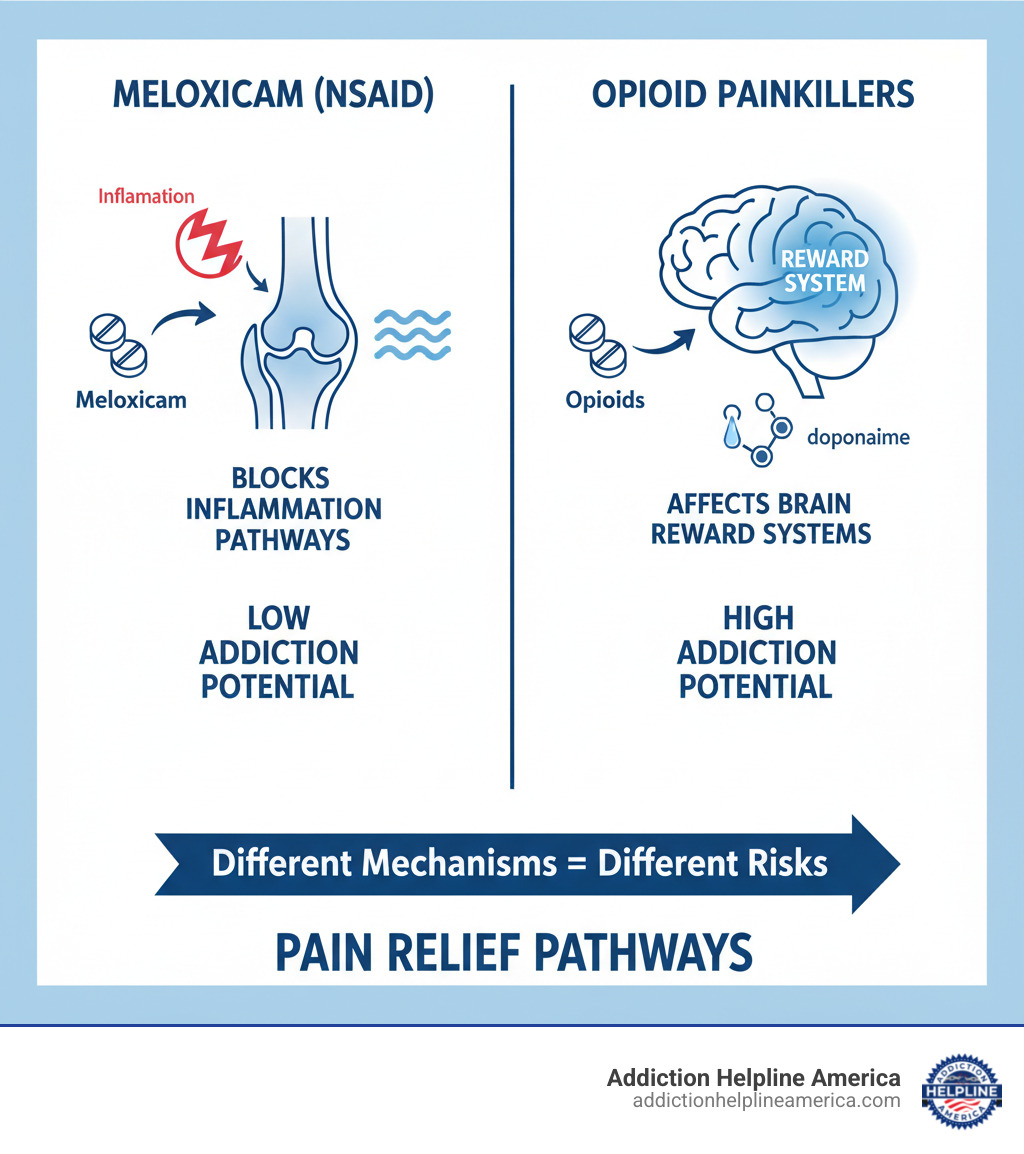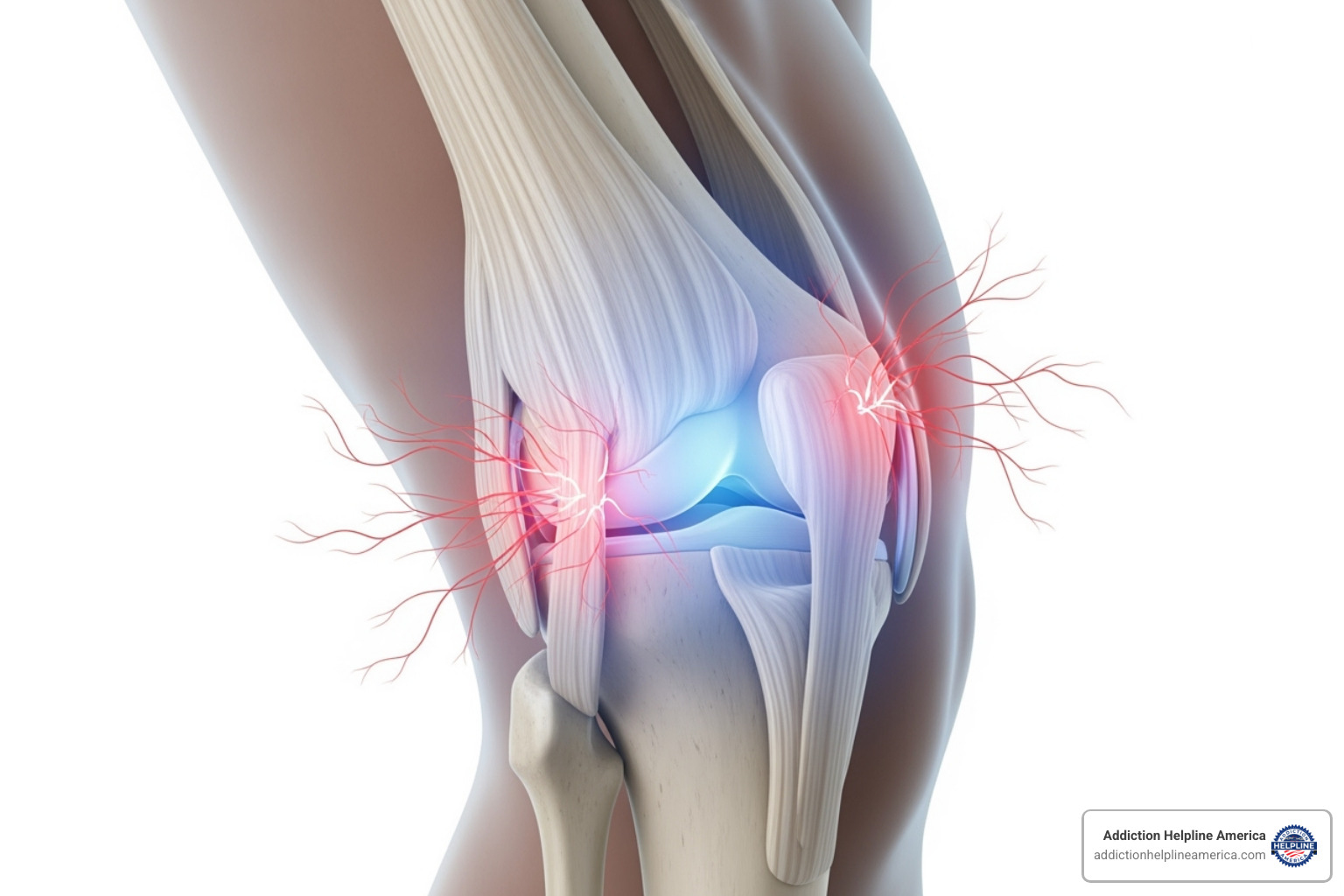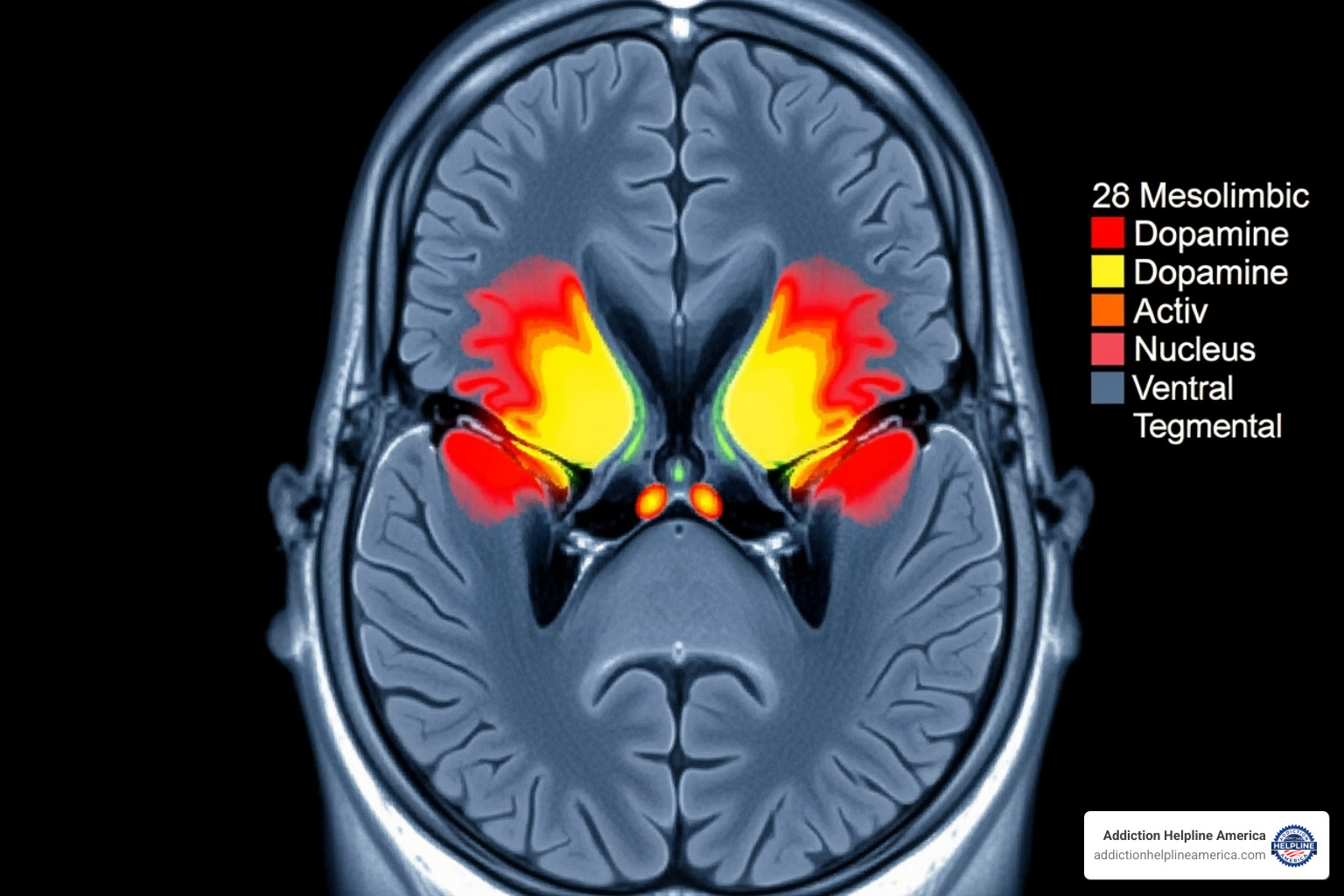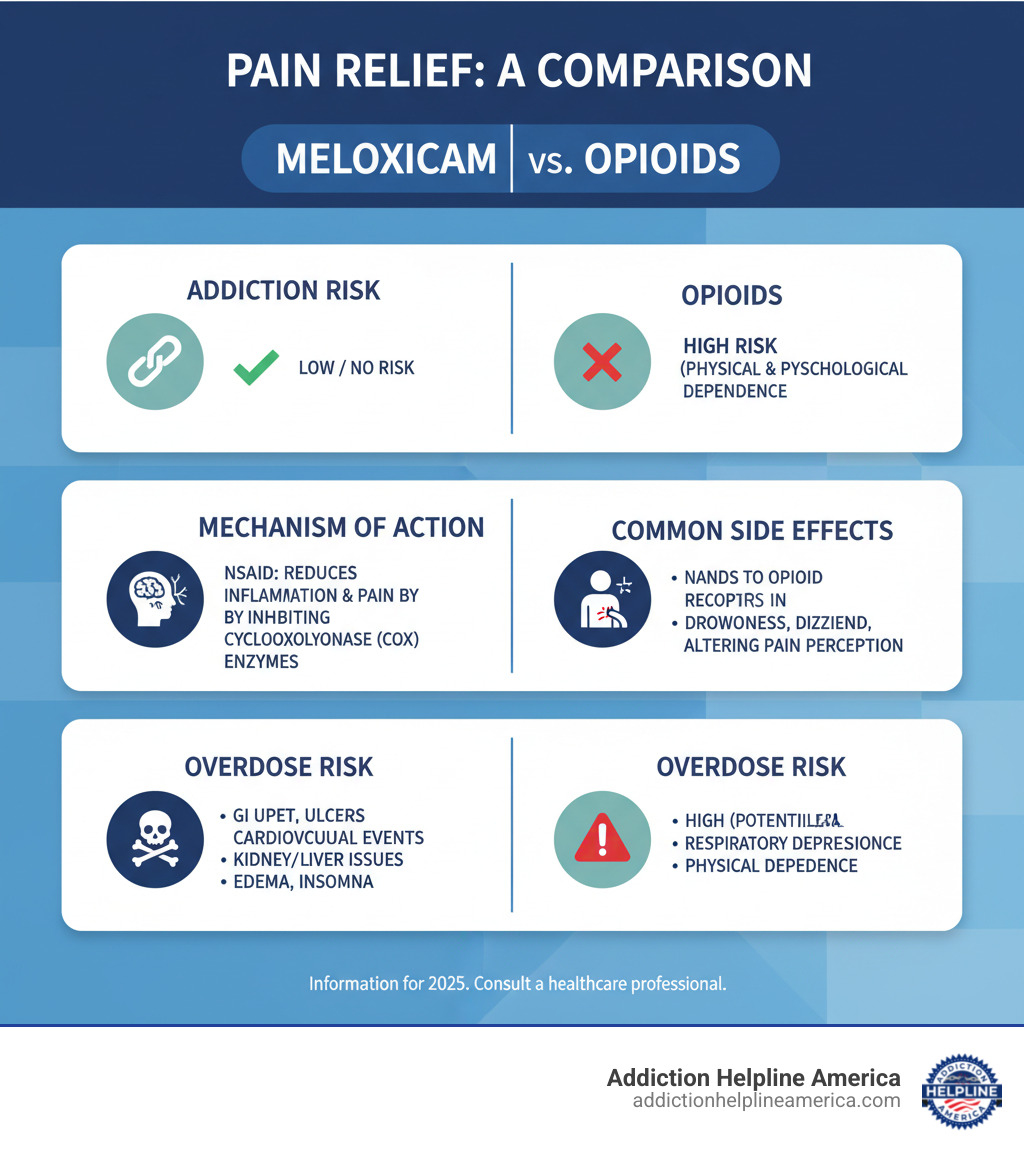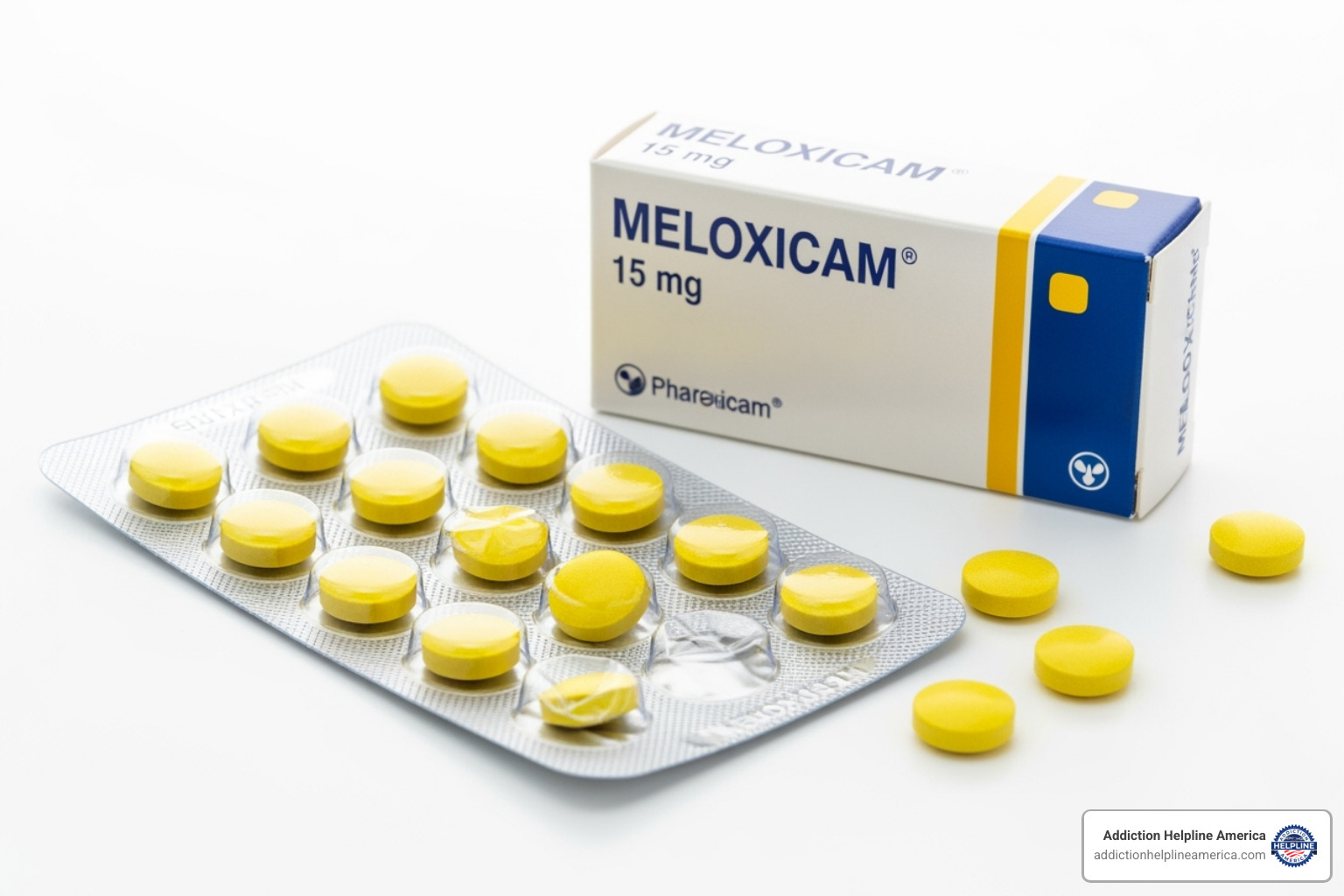
Understanding the Truth About Meloxicam’s Addiction Risk
Is the drug meloxicam addictive? This question weighs heavily on the minds of patients and families facing chronic pain management decisions. The short answer is no – meloxicam is not considered an addictive drug in the traditional sense.
Quick Facts About Meloxicam and Addiction:
- Not a narcotic – Meloxicam is an NSAID, not an opioid
- No euphoric high – Does not produce the “high” associated with addictive drugs
- Not a controlled substance – No DEA scheduling restrictions
- Low abuse potential – Minimal interest from drug traffickers (only $200 worth seized in New England in 2010 out of $56 million in total drug seizures)
- Can be misused – Taking more than prescribed or using without prescription is possible
- Psychological dependence – Some people may develop dependence due to pain relief needs
With the opioid crisis claiming 91 lives daily in the United States, many patients and doctors are seeking safer alternatives for pain management. Meloxicam, a prescription anti-inflammatory medication, has emerged as a promising option for treating arthritis and chronic pain without the addiction risks of opioids.
However, confusion persists. Some people mistakenly believe meloxicam is a narcotic pain medication and abuse it accordingly. Others worry about any prescription painkiller after witnessing the devastating effects of opioid addiction on families and communities.
As Addiction Helpline America, we’ve helped thousands of individuals and families steer questions about prescription drug safety and addiction risks, including concerns about is the drug meloxicam addictive. Our experience shows that understanding the facts about different medications is crucial for making informed treatment decisions.
Understanding Meloxicam: Uses, Mechanism, and Brands
When people ask “is the drug meloxicam addictive?” it helps to first understand exactly what this medication is and how it works in your body. Meloxicam belongs to a family of medications called non-steroidal anti-inflammatory drugs (NSAIDs) – think of it as a cousin to ibuprofen, but with some important differences.
Unlike over-the-counter pain relievers you can grab at any pharmacy, meloxicam requires a prescription from your doctor. This isn’t because it’s dangerous or addictive, but because it’s a more targeted medication that works best under medical supervision.
Here’s how meloxicam works its magic in your body. When you’re injured or dealing with conditions like arthritis, your body produces chemicals called prostaglandins. While these chemicals are trying to help, they also cause the pain, swelling, and inflammation that make you miserable.
Meloxicam steps in by blocking an enzyme called cyclooxygenase-2 (COX-2) – the main culprit behind prostaglandin production. By shutting down this enzyme, meloxicam effectively turns down your body’s inflammation response, giving you relief from pain and swelling.
The FDA has officially approved meloxicam for treating osteoarthritis and rheumatoid arthritis – two conditions that cause chronic joint pain and inflammation. However, doctors sometimes prescribe it “off-label” for other painful conditions, including post-operative pain when they need a non-addictive alternative to opioids.
Common Brand Names and Forms
You might not recognize the name “meloxicam” right away, but you’ve probably heard of its most popular brand name: Mobic. Another brand name is Vivlodex, though it’s less common.
Meloxicam comes in several convenient forms to match your needs. You can get it as tablets, capsules, or liquid suspension – the liquid form is particularly helpful for people who have trouble swallowing pills.
Most people start with a typical dosage of 5-7.5 mg taken once daily. Your doctor might adjust this based on how you respond, but it’s designed to provide all-day relief with just one dose.
How Meloxicam Differs from Ibuprofen
If you’re wondering why your doctor prescribed meloxicam instead of suggesting regular ibuprofen, there are some important differences worth understanding.
The biggest difference is in COX-2 selective action. While ibuprofen blocks both COX-1 and COX-2 enzymes, meloxicam primarily targets just COX-2. This matters because COX-1 helps protect your stomach lining and kidney function. By leaving COX-1 alone, meloxicam is generally easier on your stomach and kidneys than non-selective NSAIDs like ibuprofen.
This improved safety profile makes meloxicam a better choice for people who need long-term pain management. While ibuprofen is great for occasional headaches or short-term pain, meloxicam is designed for ongoing conditions like arthritis where you need consistent relief.
The prescription vs. over-the-counter difference also reflects meloxicam’s greater potency. It’s not that meloxicam is addictive or dangerous – it’s simply a more powerful, targeted medication that works best when monitored by your healthcare provider.
Is the Drug Meloxicam Addictive? The Reality of Dependence vs. Abuse
Let’s address the question that brings many people to this article: is the drug meloxicam addictive? The straightforward answer is no. Meloxicam does not cause addiction in the way that opioids or other controlled substances do.
Here’s what makes meloxicam different from addictive drugs: it doesn’t produce a euphoric high and isn’t classified as a narcotic. The Drug Enforcement Administration doesn’t consider it a controlled substance, which means you won’t find it grouped with potentially addictive medications that have strict regulations.
The numbers tell an interesting story about meloxicam’s lack of appeal in illegal drug markets. According to U.S. Department of Justice seizure statistics, out of more than $56 million worth of drugs confiscated in New England during 2010, only $200 worth was meloxicam – that’s just twenty tablets. This tiny fraction shows how little interest drug traffickers have in meloxicam compared to truly addictive substances.
But here’s where things get a bit more complex. While meloxicam isn’t addictive, there’s an important difference between physical addiction and psychological dependence. Some people might develop a psychological reliance on the pain relief meloxicam provides, especially if they’ve been dealing with chronic pain for months or years.
Why Meloxicam is Not Considered Addictive
The key to understanding why meloxicam isn’t addictive lies in how it works in your body. Unlike opioids that interact with your brain’s reward pathways and flood your system with feel-good chemicals, meloxicam simply reduces inflammation where you’re experiencing pain.
Think of it this way: opioids essentially hijack your brain’s pleasure center, creating intense feelings that your brain wants to experience again and again. Meloxicam doesn’t touch these reward pathways at all. It’s more like taking the swelling out of a sprained ankle – helpful for the problem, but not something that creates cravings.
This difference in how the medication works explains why people don’t experience true withdrawal symptoms when they stop taking meloxicam. If someone suddenly stops their meloxicam prescription, their original pain and inflammation will likely return, but this isn’t the same as withdrawal. True withdrawal involves your body physically craving the substance, often accompanied by symptoms like sweating, nausea, and intense drug cravings.
A scientific review on meloxicam’s safety supports what we see in practice – meloxicam simply doesn’t have the properties that lead to addiction.
Understanding Meloxicam Misuse and Abuse
Even though the drug meloxicam isn’t addictive, it can still be misused. This usually happens because of misunderstandings about what meloxicam actually is and what it can do.
Some people mistakenly believe meloxicam is an opioid because it’s a prescription painkiller. This confusion can lead to dangerous behaviors like taking more than prescribed in hopes of getting a stronger effect or a “high” that simply won’t happen.
Using meloxicam without a prescription is another form of misuse we see. Someone might borrow pills from a friend or family member, thinking they’re getting access to powerful pain relief when they’re actually just getting an anti-inflammatory medication.
Polydrug abuse presents another concern. Some people combine meloxicam with alcohol, particularly to treat hangovers. While meloxicam might help with inflammation-related hangover symptoms, this pattern can be dangerous and might indicate broader substance use issues.
Doctor shopping – visiting multiple healthcare providers to get additional prescriptions – can also occur with meloxicam, though it’s less common than with truly addictive medications.
Warning signs of meloxicam misuse include running out of prescriptions early, continuing to take the medication after the original condition has healed, or using it in ways not intended by the prescribing doctor. While these behaviors don’t indicate addiction to meloxicam itself, they might signal underlying pain management challenges or other substance use concerns that deserve professional attention.
At Addiction Helpline America, we’ve helped many people who initially called with concerns about prescription medications like meloxicam, only to find they needed support for other substance use issues or better pain management strategies.
Risks Beyond Addiction: Side Effects, Overdose, and Long-Term Use
While the answer to “is the drug meloxicam addictive?” is reassuring, any medication can cause problems when not used properly. Even though meloxicam won’t get you hooked like opioids, it still carries real risks that can seriously impact your health.
Think of it this way: just because a tool isn’t sharp enough to cut you doesn’t mean it can’t cause damage if used incorrectly. The same principle applies to meloxicam. When people take more than prescribed or use it without medical supervision, they’re putting themselves at risk for complications that can be just as serious as those from addictive substances.
The FDA has issued specific warnings about meloxicam’s potential for causing gastrointestinal bleeding and ulcers, as well as increased risk of heart attack and stroke. These aren’t just theoretical concerns—they’re real dangers that increase significantly with misuse or long-term use.
Common and Serious Side Effects
Most people who take meloxicam as prescribed experience manageable side effects, if any at all. However, it’s crucial to know what to watch for and when to seek help.
The more common side effects you might notice include diarrhea, gas, heartburn, and stomach pain. These usually aren’t dangerous, but they can be uncomfortable and may indicate that your body isn’t tolerating the medication well. Other typical reactions include dizziness, headaches, and mild nausea.
However, some side effects demand immediate medical attention. If you experience chest pain, shortness of breath, or sudden weakness on one side of your body, call 911 right away—these could signal a heart attack or stroke.
Bloody or tarry stools are another red flag that requires urgent care. This often indicates bleeding in your digestive system, which can be life-threatening. Similarly, if you vomit blood or something that looks like coffee grounds, don’t wait—get emergency help immediately.
Swelling, especially of your face, throat, or tongue, along with difficulty breathing or a severe rash, could mean you’re having an allergic reaction. This is a medical emergency that requires prompt treatment.
Meloxicam Overdose Symptoms
Yes, you can overdose on meloxicam, especially if you take large amounts thinking it will provide better pain relief. An overdose can be serious and even life-threatening.
The signs of meloxicam overdose often start subtly. You might feel unusually tired or drowsy, experience severe nausea, or develop intense stomach pain. As the overdose progresses, symptoms can become more alarming.
Bloody vomit or vomit that looks like coffee grounds is a serious warning sign, as are black or bloody stools. These indicate internal bleeding that requires immediate medical intervention. In severe cases, people may have trouble breathing, experience seizures, or even fall into a coma.
If you suspect someone has taken too much meloxicam, don’t wait to see if they get better. Call 911 or poison control immediately. Quick action can make the difference between recovery and serious complications.
Long-Term Health Complications
Extended use of meloxicam, particularly at higher doses than prescribed, can lead to significant health problems that may not be immediately obvious but can cause lasting damage.
Your cardiovascular system faces increased risk with long-term meloxicam use. Like other NSAIDs, meloxicam can raise your chances of heart attack, stroke, and blood clots. This risk is especially concerning if you already have heart problems or other cardiovascular risk factors.
Your kidneys and liver also bear the burden of processing meloxicam over time. Studies show that kidney damage from NSAIDs can often be reversed if caught early and the medication is stopped, but chronic damage can be permanent. Up to 7% of people taking meloxicam show liftd liver enzymes, which can indicate liver stress or damage.
Gastrointestinal complications become more likely with extended use. Your risk of developing ulcers, stomach bleeding, or even holes in your digestive tract increases significantly. This risk jumps even higher if you combine meloxicam with alcohol or if you smoke.
Some people develop fluid retention (edema), causing uncomfortable swelling in their hands, feet, and legs. While this might seem minor, it can actually lead to more serious problems like heart failure if left unchecked.
Reproductive health can also be affected. Pregnant women should avoid meloxicam as it can harm the developing baby, and both men and women may experience fertility issues with long-term use.
The key message here is simple: respect meloxicam as the powerful medication it is. While “is the drug meloxicam addictive?” isn’t a concern, the potential for serious health complications definitely is. Always stick to your prescribed dose and maintain regular communication with your healthcare provider about any side effects or concerns.
Meloxicam vs. Opioids and Other Pain Management Alternatives
When patients ask “is the drug meloxicam addictive?” they’re often comparing it to opioids – and for good reason. The opioid crisis has changed how we think about pain management, and meloxicam offers a refreshing alternative that doesn’t come with the same devastating risks.
The contrast between these two types of pain medications is striking. While opioids work by binding to receptors in your brain and can create dependency within days or weeks, meloxicam simply reduces inflammation at the source of your pain. It’s like the difference between masking a fire alarm and actually putting out the fire.
Why Meloxicam is a Safer Alternative to Opioids
The most compelling reason meloxicam stands out as a safer choice is its complete lack of addictive potential. As we’ve explored throughout this article, meloxicam doesn’t produce euphoria or mess with your brain’s reward system – it just gets to work on reducing the inflammation that’s causing your discomfort.
Here’s something that might surprise you: research shows that for chronic conditions like back pain or arthritis, meloxicam can be just as effective as opioids for improving your daily function. A 2018 study found that patients taking opioids for chronic pain didn’t actually feel better than those using non-opioid alternatives like meloxicam. In some cases, the opioid users reported slightly higher pain levels.
Healthcare providers are getting creative with meloxicam too. Some are combining it with other medications like bupivacaine for post-surgical pain management. This approach has shown remarkable results – reducing patients’ need for opioids by up to 50 percent after procedures like hernia repairs or bunion surgeries. That’s a huge win for anyone who wants to avoid the addiction risks that come with opioid pain relievers.
The beauty of meloxicam lies in its straightforward approach. It doesn’t promise to make you feel amazing or take all your troubles away. It simply does what it’s supposed to do: reduce inflammation and pain so you can get back to living your life.
Non-Medication and Alternative Options
Of course, pills aren’t the only answer to pain management. Many people find relief through approaches that don’t involve any medication at all, and these can work wonderfully alongside or instead of meloxicam.
Physical therapy tops the list for good reason – a skilled therapist can design exercises that strengthen the muscles around painful joints and improve your flexibility. It’s like having a personal trainer who specializes in making you hurt less.
Acupuncture and massage therapy offer gentle, hands-on approaches that many people swear by. While the science is still catching up to understand exactly how they work, countless patients report significant relief from these complementary treatments.
Your kitchen might hold some powerful medicine too. Following an anti-inflammatory diet rich in colorful fruits and vegetables, omega-3 fatty acids from fish, and whole grains can naturally reduce inflammation throughout your body. At the same time, cutting back on processed foods and sugar can help keep inflammation in check.
Regular exercise might seem counterintuitive when you’re in pain, but gentle, consistent movement often helps more than rest. Swimming, walking, or yoga can keep your joints mobile and boost your mood through natural endorphin release.
If meloxicam isn’t the right fit for you, other options include naproxen (which you might know as Aleve) or celecoxib (Celebrex), though each comes with its own considerations. For milder pain, acetaminophen (Tylenol) offers relief without the stomach irritation that can come with NSAIDs.
The key is working with your healthcare provider to create a pain management plan that fits your specific situation, lifestyle, and comfort level. There’s no one-size-fits-all solution, but there are more options available today than ever before – and most don’t carry the addiction risks that make opioids so concerning.
Frequently Asked Questions about Meloxicam
We hear these questions all the time from people who are trying to understand meloxicam better. Let’s clear up some of the most common concerns, especially around is the drug meloxicam addictive and what that really means for you or your loved ones.
Can you get a “high” from meloxicam?
The simple answer is no. Meloxicam won’t give you any kind of euphoric feeling or “high” that people associate with addictive drugs. Here’s why: it works completely differently from opioids or other substances that affect your mood.
While opioids bind to specific receptors in your brain that trigger pleasure and reward feelings, meloxicam stays focused on reducing inflammation in your body. It’s like comparing a wrench to a screwdriver – they’re both tools, but they do completely different jobs. Meloxicam’s job is fighting inflammation, not changing how your brain feels.
If someone thinks they’re getting a “high” from meloxicam, it’s likely either a placebo effect (their mind playing tricks on them) or they’ve mixed it with something else. The medication itself simply doesn’t have the chemical makeup to create those feelings.
Does meloxicam have street names?
You won’t find meloxicam being sold under catchy street names because, frankly, nobody’s really interested in buying it illegally. This tells us a lot about whether is the drug meloxicam addictive – if it were, you’d definitely see it floating around with nicknames like other abused substances.
The numbers back this up too. Department of Justice report we mentioned earlier? Out of more than $56 million worth of drugs seized in New England in one year, only $200 worth was meloxicam – that’s just twenty tablets. Drug traffickers aren’t wasting their time with something that doesn’t create demand.
This lack of street interest is actually good news for patients who need the medication. It means you’re taking something that’s genuinely focused on treating your condition, not something that’s going to pull you into a cycle of dependence.
Can you experience withdrawal if you stop taking meloxicam?
This is where things can get a bit confusing, so let’s break it down carefully. True withdrawal – the kind you see with addictive substances – doesn’t happen when you stop taking meloxicam. You won’t experience intense cravings, shaking, sweating, or the psychological distress that comes with opioid or alcohol withdrawal.
However, here’s what will happen: your original pain and inflammation will likely come back. If you’ve been taking meloxicam for arthritis pain, that arthritis doesn’t magically disappear when you stop the medication. The pain returning can feel pretty awful, especially if you’ve been comfortable for a while, and some people mistake this for withdrawal symptoms.
Think of it like taking off a warm coat in winter – you’re going to feel cold again, but that doesn’t mean you were “addicted” to the coat. The cold was always there; the coat was just protecting you from it.
If you’ve been taking meloxicam for a long time or you’re concerned about stopping, definitely talk with your doctor first. They can help you plan how to manage your pain effectively and maybe transition to other treatments if needed. But you don’t need to worry about the scary withdrawal process that comes with truly addictive substances.
Finding Help for Prescription Drug Misuse
While we’ve established that is the drug meloxicam addictive has a clear answer—no, it’s not—the reality of prescription drug misuse is more complex than addiction alone. Even non-addictive medications like meloxicam can become part of problematic patterns that signal deeper concerns.
When someone consistently takes more meloxicam than prescribed, seeks multiple prescriptions from different doctors, or uses it in ways their healthcare provider never intended, it often points to underlying pain management struggles or broader substance use issues. Maybe they’re desperately trying to manage chronic pain that feels overwhelming. Perhaps they’re combining it with alcohol or other substances in dangerous ways. Or they might be part of a larger pattern of prescription drug misuse that started elsewhere.
The important thing to understand is that misusing any prescription medication—addictive or not—deserves attention and support. It’s not about judgment or shame. It’s about recognizing when someone needs help finding healthier ways to manage their pain, stress, or other challenges.
Sometimes, what looks like meloxicam misuse is actually someone struggling with an opioid use disorder who mistakenly believes meloxicam can provide similar relief. Other times, it’s someone whose legitimate pain isn’t being adequately addressed by their current treatment plan, leading them to take matters into their own hands in potentially harmful ways.
If you’re concerned about your own relationship with prescription medications—or that of someone you care about—reaching out for guidance is a sign of strength, not weakness. Professional support can help you understand what’s driving the misuse and develop safer, more effective strategies for managing whatever underlying issues exist.
At Addiction Helpline America, we understand that prescription drug concerns come in many forms. Whether someone is struggling with truly addictive medications or finding themselves in problematic patterns with drugs like meloxicam, our team provides confidential, personalized guidance to help individuals and families understand their options and find appropriate support.
Recovery isn’t just about addiction—it’s about finding healthier ways to live and manage life’s challenges. If prescription drug misuse is part of your story, or if you’re simply worried about the path you’re on, support is available. Find help for addiction today.
Our helpline is 100%
free & confidential
If you or someone you care about is struggling with drug or alcohol addiction, we can help you explore your recovery options. Don’t face this challenge alone—seek support from us.
Programs
Resources
Will my insurance
cover addiction
treatment?
We're ready to help
Find the best
drug or alcohol treatment
center
Are you or a loved one struggling with addiction? Call today to speak to a treatment expert.

